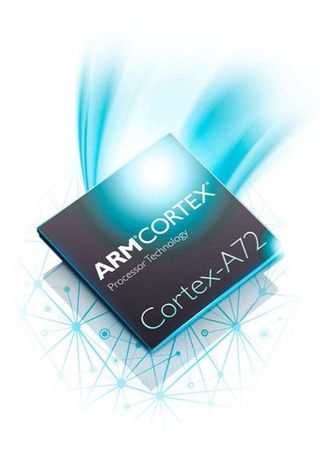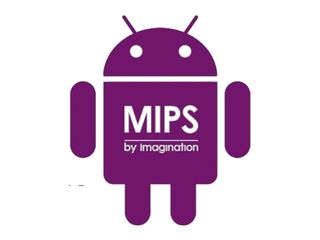HSA Is About To Go Viral

The Heterogeneous System Architecture (HSA), which is already in use inside of select AMD processors is about to spread to the majority of smartphone devices on the market, as ARM, Imagination, and MediaTek incorporate support for HSA into their upcoming products.
Growing Hardware Support
HSA is a powerful technology in that it allows devices to better use the available bandwidth, and it increases overall performance and reduces power consumption. On the desktop, we tested the benefits of HSA in AMD's A10-7800 and found HSA to be exceedingly helpful, although only when applications are optimized to take advantage of it. In a mobile device, these benefits are expected to be even more tangible, as the available bandwidth inside of the SoC is much more constrained than a desktop platform.

To take advantage of this technology, ARM is working to implement HSA in a way in which it can be used with various GPU IPs and other mobile hardware. Although most SoC developers haven't announced plans for HSA yet, once ARM has added HSA support, it should be relatively easy for SoC developers to take advantage of HSA and improve system performance.
"As a founding member of the HSA foundation, ARM has worked with our fellow members to develop specifications that enable hardware and software to take advantage of both CPU and GPU compute," said Jem Davies, vice president of technology, media processing group, ARM. "ARM is actively developing CPU, GPU and interconnect IP with energy efficiency and full system coherency as guiding design principles while extending the system capabilities aligned with HSA coherency standards."

MediaTek stated that it has received interest in HSA technology from its customers, and as such has begun development of a finished HSA-compliant SoC.
"MediaTek is a firm believer in the value of heterogeneous computing and a strong supporter of the good work of the HSA Foundation. We are working to leverage this technology into our products to provide even better end user experience," said Giri Amarakone, senior director, marketing and business development, MediaTek.
Imagination, one of the few companies that develo
Stay on the Cutting Edge
Join the experts who read Tom's Hardware for the inside track on enthusiast PC tech news — and have for over 25 years. We'll send breaking news and in-depth reviews of CPUs, GPUs, AI, maker hardware and more straight to your inbox.

ps both CPU and GPU technologies targeted at mobile devices, also announced that it will introduce HSA support across its product lines starting in 2016. This support will extend to MIPS I-class and P-class processors, as well as the PowerVR GPU, which is heavily used by other companies such as Apple.
"Because it provides a consistent programming model and enables efficient execution on CPUs, GPUs and beyond, HSA is an important standard for future SoCs. Imagination has played a key role in developing the HSA specifications as a founder member of the HSA Foundation. HSA holds the promise of enabling developers to write software that makes the most of our future heterogeneous platforms targeting a range of devices including mobile and tablets, vision systems, automotive, and more," said Peter McGuinness, director of multimedia technology marketing at Imagination.
Growing Software Support

Mobile HSA implementations will encounter the same problem that AMD did, in that applications must be optimized to take advantage of this feature, and to try and get around this problem, General Processor Technologies (GPT) is sponsoring an open source project to expand the software tools available for HSA application development. The HSA Foundation has been working towards this goal for some time now, and the added support will only hasten the growth of HSA support.
"We're delighted to be involved in creating a foundational tools ecosystem for HSA. Through the project we're sponsoring, heterogeneous processors may benefit from kernel agent support and the vector/SIMD optimizations in GCC," said Dr. John Glossner, CEO of General Processor Technologies.
This growth should benefit AMD as well, as it will become increasingly easier for developers to program in HSA support.
Follow Michael Justin Allen Sexton @EmperorSunLao. Follow us @tomshardware, on Facebook and on Google+.
-
alanwu A technology of the future again.Reply
AMD said about the similar thing for GPGPU five years ago. I didn't see big progress yet. -
blazorthon ReplyA technology of the future again.
AMD said about the similar thing for GPGPU five years ago. I didn't see big progress yet.
Are you joking? GPGPU is huge and used almost everywhere from media creation/editing like Photoshop even into games with OpenCL lighting features. -
IInuyasha74 ReplyA technology of the future again.
AMD said about the similar thing for GPGPU five years ago. I didn't see big progress yet.
Are you joking? GPGPU is huge and used almost everywhere from media creation/editing like Photoshop even into games with OpenCL lighting features.
He is right, GPGPU is used significantly more now than it used to be and undergone a considerable amount of development. -
MotherBrain Does this mean AMD's cpu division might not die off on us? even if it is only in the phone/tablet sphere, I'd be glad to see them survive. Still, I can't help but dream about Intel getting some competition in the desktop world. Might be the smart move in the long run though, as I expect that 10-20 years from now home users will not use desktops for gaming.Reply
-
thor220 Seems like a welcome boost for ARM. It'll probably amount to a greater speed increase then the last 10 years of intel processor development given their current rate.Reply -
Alec Mowat ReplyDoes this mean AMD's cpu division might not die off on us? even if it is only in the phone/tablet sphere, I'd be glad to see them survive. Still, I can't help but dream about Intel getting some competition in the desktop world. Might be the smart move in the long run though, as I expect that 10-20 years from now home users will not use desktops for gaming.
Intel's desktop competition is ARM, and it has been for a long time. You just don't realize it yet.
AMD just uses Intel's patent on x86, because of the popularity of IBM PC's back in the day.
IBM doesn't even use Intel anymore.
http://www-03.ibm.com/systems/power/hardware/s822/specs.html
They sold their consumer server business to Lenova awhile back. -
jimmysmitty Reply16741823 said:Seems like a welcome boost for ARM. It'll probably amount to a greater speed increase then the last 10 years of intel processor development given their current rate.
Last 10 years? I wouldn't say that. In the last 10 years we had Core 2 and Sandy Bridge, both which were pretty big leaps.
I would say more last 3-5 years as Intel hasn't had consistent or aggressive competition in the desktop or server market from AMD.
The one problem ARM faces though is that it is a simplistic design which makes it very power efficient. The more complex they make it the less efficient it becomes. When they become as complex as x86 they will lose that advantage.
That said, HSA is interesting but beyond hardware is software developers and that is where it will be hard to get them to accept it. GPGPU is huge in the design industry but very rarely used in gaming or much else, DX is still the majority holder for gaming.
the idea is that if you can get mass adoption by the software developers you have pretty much won. If not, then you will lose. -
InvalidError Reply
ARM announcing that they will be integrating HSA support in their reference designs does not really help AMD since most companies designing and manufacturing ARM-based chips are competing against AMD in the mobile and (potentially) server space and use non-AMD IGPs, so no IGP/GPU IP-core sales there either.16741630 said:Does this mean AMD's cpu division might not die off on us?
The only way this might help AMD a little is by seeding some extra interest in HSA on the x86 desktop side of things but that is not going to be anywhere near enough to save AMD on its own. -
xenol HSA only works well if the entire system's memory is unified. This works great for mobile because memory is unified by design. In desktops, it won't get headway beyond AMD's APUs, which can't compete in raw performance over a high end GPU. So if you're doing serious number crunching, stuffing everything onto the GPU is more than likely better than using an HSA based APU system (theoretically an R9 Fury is at least 8 times better than an APU, while consuming only about 2-3 times more power).Reply
AMD had great ideas here, but they sort of forgot that detail. -
InvalidError Reply
HSA's shared memory address space has implications well beyond sharing memory between the IGP and GPU: enabling any device to access any memory space has the potential to eliminate tons of redundant buffer copies between address spaces as data moves from user-land to hardware and back. Tighter communication between the IGP and CPU is only the beginning, sound, network, storage, etc. can all benefit from the reduced overhead opportunities too.16744565 said:In desktops, it won't get headway beyond AMD's APUs, which can't compete in raw performance over a high end GPU.
In 2017, I expect to see AMD putting HBM on APUs. That should make APUs very interesting for mid-range gamers.
Most Popular


